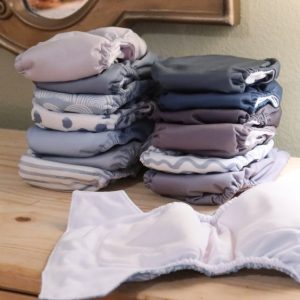It’s easy to take modern disposable diapers for granted, but humans have been grappling with infant hygiene for millennia. What did people do before diapers? While we can’t time travel to observe ancient parenting practices firsthand, historical records, archaeological findings, and the traditions of some indigenous cultures offer valuable clues.
Nature’s Absorbent Materials: Moss, Grass, and Animal Skins
Before the advent of cloth, let alone the super absorbent polymers in modern diapers, parents turned to nature’s offerings.
Moss and Grass:
These readily available materials were surprisingly effective at absorbing moisture, providing a natural barrier between baby and mess.
Animal Skins:
Softened animal skins, especially those of smaller creatures like rabbits, offered a protective, reusable layer. Sealskin was particularly valued in colder climates for its insulating properties.
Swaddling: More Than Just a Cozy Wrap
Swaddling, the practice of tightly wrapping a baby in cloth, served multiple purposes:
- Containment: While not a diaper in the modern sense, swaddling helped contain messes, especially when combined with absorbent materials like moss.
- Comfort and Security: The snugness mimicked the womb, calming fussy babies and promoting sleep.
- Warmth: Swaddling layers provided crucial insulation, especially in colder climates.
Elimination Communication: A Natural Rhythm
What did people do before diapers? While it may seem unconventional today, many ancient cultures practiced a form of elimination communication (EC). Parents paid close attention to their babies’ cues, holding them over designated spots (leaves, bowls, etc.) when they sensed the need to eliminate. This intuitive approach minimized the need for constant diapering.
As societies developed, so did diapering practices. Linen, known for its absorbency, became a popular diapering material. Pieces of linen were folded and held in place with pins or ties. Wool, with its natural lanolin, offered additional protection against moisture.

In many indigenous cultures, cradleboards served as both baby carriers and diapering solutions. Babies were strapped onto these wooden boards, often with moss or other absorbent materials placed underneath. The cradleboard’s slightly angled design helped funnel waste away from the baby’s skin.
Diapering Around the World: Cultural Variations
What did people do before diapers? Diapering practices weren’t uniform across the globe. In warmer climates, babies often went diaper-free, with parents quickly cleaning up any messes. In some cultures, babies wore simple loincloths made of cloth or animal hide, while others relied on moss-filled pouches.
The advent of disposable diapers in the mid-20th century marked a turning point in parenting. The convenience and absorbency of these products were game-changers, freeing parents from the constant washing of cloth diapers.
While undeniably convenient, disposable diapers come with a hefty environmental price tag. They contribute significantly to landfill waste and take centuries to decompose. This has led to a resurgence in interest in cloth diapering and other eco-friendly alternatives.
Lessons from the Past: Can We Learn from Ancient Practices?
As we face the environmental challenges of disposable diapers, it’s worth revisiting some ancient diapering practices. Elimination communication, for example, could reduce diaper usage and foster a closer connection between parent and child.

The Rise (and Fall?) of Disposable Diapers
The convenience of disposable diapers is undeniable, but their impact on the environment is a growing concern. With billions of diapers ending up in landfills each year, many parents are seeking more sustainable options. Could the wisdom of the past hold the key to a greener future?
Elimination Communication (EC), once a common practice in many cultures, is gaining traction among eco-conscious parents. This method involves observing and responding to a baby’s natural elimination cues, reducing the need for constant diapering. While it requires patience and dedication, EC can strengthen the bond between parent and child while minimizing environmental impact.
Cloth diapering has come a long way from the days of safety pins and plastic pants. Today’s cloth diapers are stylish, easy to use, and come in a variety of eco-friendly materials. From all-in-one designs to pocket diapers, there’s a cloth option to suit every family’s needs and budget.
For parents seeking a middle ground between convenience and sustainability, hybrid diapering offers a compelling solution. Hybrid diapers combine a reusable outer shell with disposable inserts, reducing waste while still providing the ease of disposables.
Diaper Alternatives: Exploring New Frontiers
What did people do before diapers? Beyond cloth and hybrid options, innovative diaper alternatives are emerging. Some companies are developing compostable diapers made from plant-based materials, while others are experimenting with reusable absorbent pads and liners.
The future of diapering is likely to be a blend of ancient wisdom and modern innovation. As we strive for more sustainable solutions, we can draw inspiration from the past while embracing the latest advancements in materials and technology.
Ultimately, the choice of how to diaper a baby is a personal one. Factors like lifestyle, budget, and environmental concerns all play a role in the decision. The key is to make an informed choice that aligns with your values and priorities.
In the end, the story of diapering is a story of human ingenuity, adaptability, and the enduring bond between parent and child. Whether we choose ancient methods or modern marvels, our goal remains the same: to provide our little ones with the care and comfort they deserve.
Diapering and Social Equity: Addressing the Diaper Need
While the history of diapering is fascinating, it’s important to acknowledge that access to clean diapers is a pressing issue for many families. Diaper need, the lack of sufficient diapers to keep a baby clean, dry, and healthy, can have a significant impact on a child’s well-being. Organizations like the National Diaper Bank Network are working to address this issue by providing diapers to families in need.
Supporting Families in Need: How You Can Help
If you’re passionate about supporting families and ensuring every baby has access to clean diapers, there are many ways to get involved. You can donate to diaper banks, volunteer your time, or advocate for policies that support diaper access.
In the grand tapestry of human history, diapering may seem like a small thread, but it’s woven into the fabric of our lives. From the earliest days of human civilization to the modern era, diapering has evolved and adapted to meet the needs of both parents and children. As we look to the future, the choices we make about diapering will shape not only the lives of our children but also the health of our planet.








